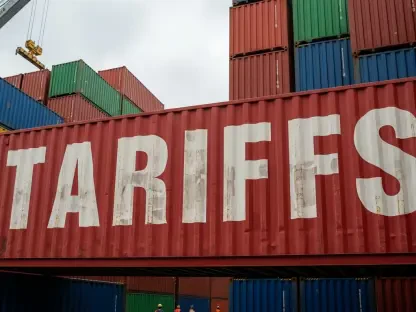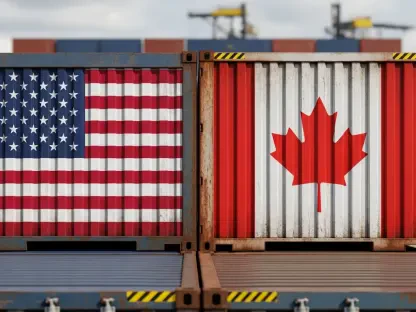Listen to the Article
Marketing ads worldwide depict Santa and his trusty elves and reindeer preparing for the delivery of Christmas gifts. The actual teams behind the scenes are men and women in warehouses and delivery vans working in supply chain and logistics. Thanks to the convenience and variety, millions of customers will avoid the congested and busy malls and do their festive season shopping from the comfort of their homes. According to Oberlo, 34% of customers will do most of their shopping online. The worst-case scenario for families and friends would be late and incorrect deliveries during this special time, deeply impacting brand perception.
As online shopping becomes more popular and e-commerce brands continue to thrive, third-party logistics services are under immense pressure to deliver gifts and goods in time for Christmas.
Logistics companies must prepare for a chaotic festive season, navigating the typical traffic, congestion, and high order volumes as well as the uncontrollable, like accidents en route, adverse weather conditions, and vehicle breakdowns.
Let’s take a look at some of the challenges and solutions to managing the high volume of deliveries in the holiday season:
Complexities in transportation and last-mile delivery
Logistics and transport companies anticipate a busy season ahead of the 2024 Christmas period. Cross-border logistics has its issues, but with air freight, container shipping, and goods trains for delivery, there’s considerably less pressure than last-mile courier services. The parcel industry in the United States can deliver approximately 120 million parcels, of which 82 million will be delivered during the holiday season.
Here are some of the issues they expect to come up against:
Logistics:
Last-mile delivery services are under enormous pressure to make this festive season successful. Not only are their reputations on the line, but those of the e-commerce marketplaces and independent retailers that utilize their services are, too.
Research indicates that missed or late delivery has a significant impact on retailers, which includes:
Increased penalty costs for retailers, who are forced to compensate customers for missed or late deliveries.
Additional expenses incurred with each missed delivery (labor, transport, etc.).
Negative brand perception.
The sheer demand on logistics companies, driven by increased online holiday shopping, will deeply impact last-mile delivery, particularly as companies race to fulfill delivery expectations. The high volumes, tight deadlines, busy roads, and staffing capacity challenges all add to the season’s stress.
For most, this is a precarious balancing act of operational efficiency.
Safety risks:
Driver safety is a major issue heading into the holidays. Delivery drivers are under immense pressure to meet demands and often work longer hours with overloaded vehicles. With fatigue and stress, drivers may be tempted to cut corners to meet scheduling demands.
Regarding safety, drivers often have to contend with icy roads, low light, and poor visibility and may even be a target for crime.
Poor Supply Chain Communication
Managing logistics and supply chain communication is difficult at the best of times. In the days leading up to Christmas, there’s the added pressure of coordinating and communicating across the entire supply chain, with every link overworked and overstressed. Last-mile delivery teams must manage communication with multiple suppliers, driver scheduling, and end customers. A single issue in the chain can have a ripple effect and strain the entire system.
Last-mile drivers are often tasked with managing cascading delays stemming from suppliers, which adds to the pressure of keeping on schedule. With the increase in shopping also comes the influx of returns, which adds additional strain and emphasizes the importance of reverse logistics. Real-time tracking and monitoring are key to aligning efforts.
The Business Case: Supporting Supply Chain
Vendors, suppliers, and e-commerce businesses have a role in supporting and strengthening the supply chain to ensure a smoother process leading up to delivery to the end customer. Here are a few ways businesses can reduce the stress of last-mile delivery:
Supplier Diversification
Businesses can minimize disruptions by diversifying suppliers. When orders increase during the festive season, companies can ensure they can meet the demand by having access to more than one supplier.
Integrate Technology
Supply chain technology can significantly impact inventory management. With IoT and AI integration, businesses can track and manage stock in real-time. This reduces overstocking issues, which can strain warehouses, and helps vendors keep pace with supply and demand during peak periods.
Forecasting and planning:
Data plays an important role in helping businesses accurately forecast and plan for busy seasons. Considering historical data and current trends, alongside consumer preferences, it helps to paint a picture of which products will be in high demand over the festive season. This information can also drive marketing toward these products before the season to lessen the pressure during the holidays.
Production and manufacturing:Following the above, businesses can effectively drive production and manufacturing using data from forecasting and planning. This applies to all industries, from festive foods to toys and jewelry. This is key to ensuring that all products are ready and available, which prevents production delays and, of course, delivery.
Global sourcing:Because so many products are produced worldwide, your supply chain and Christmas logistics will have to involve shipping all this cargo from its manufacturing location to its final destination efficiently and on time.
Warehousing and distribution:Throughout the transportation and distribution process, products are stored in warehouses, often located near major consumer markets. When considering your distribution process, it’s important to ensure that all warehousing facilities are large enough to cope with large inventories and increased demand.
Best practices for enhancing logistics and supply chain safety during the holiday season
To successfully manage the challenges of the holiday season, logistics and supply chain professionals can adopt key strategies to minimize risks:
Employee Safety Training: Conduct frequent safety training sessions for regular and temporary staff to reduce incidents from a lack of experience.
Safety System Deployment: Implement safety systems within warehouses or distribution centers to prevent accidental drive-aways, particularly when workloads and time pressures peak during the holidays.
Workforce Management and Fatigue Prevention: Design shift schedules that prioritize adequate employee rest, allocate additional support resources, and monitor overall staff well-being to minimize fatigue-related incidents.
Strengthen Cybersecurity Protocols: Enhance cybersecurity defenses by updating systems, performing regular data backups, and ensuring robust network protections to guard against cyberattacks during this high-risk period.
Improve Supplier and Partner Collaboration: Maintain clear and regular communication with suppliers and partners to align on timelines, capacity expectations, and contingency plans, reducing the likelihood of miscommunication issues.
Conclusion
The festive season amplifies the complexities of logistics and supply chain management, with challenges ranging from heightened demand and last-mile delivery surges to cybersecurity threats and coordination hurdles. Businesses that succeed during this critical period do so by embracing proactive planning, leveraging technology, and fostering strong communication across their supply chains.
By anticipating challenges and implementing solutions such as flexible production schedules, robust cybersecurity measures, and employee training programs, companies can minimize disruptions and maintain operational efficiency. The key lies in balancing agility with meticulous planning to deliver products and exceptional customer experiences during the busiest and most demanding time of the year. With thoughtful preparation and a focus on safety, efficiency, and collaboration, businesses can navigate the holiday season’s challenges and position themselves for success well into the new year.









